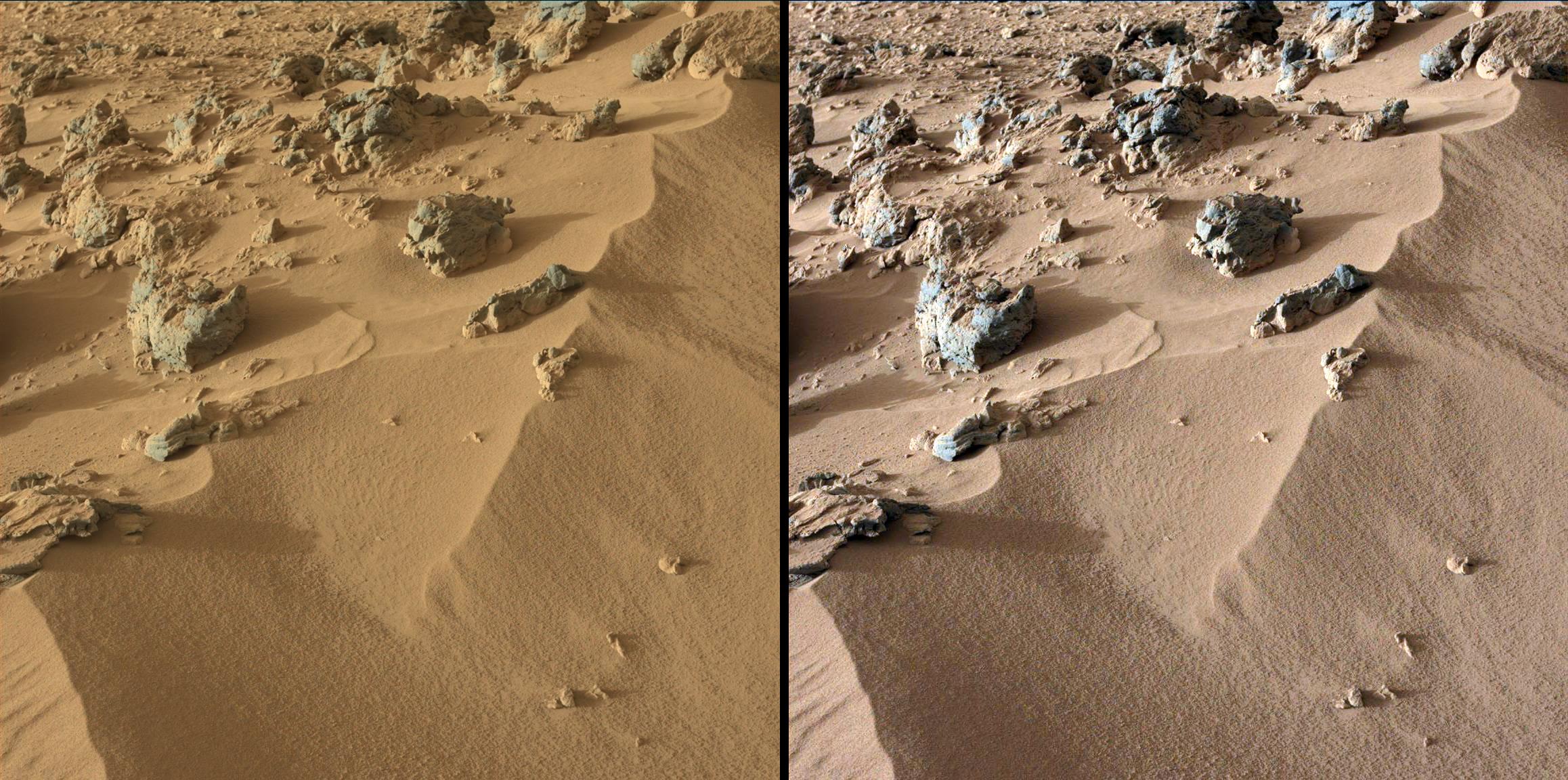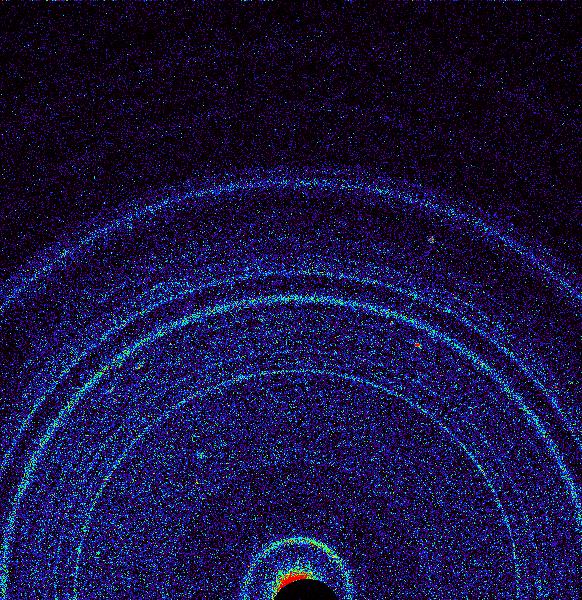
The first-ever in-depth analysis of Martian dirt reveals a mineralogical makeup similar to that of Hawaiian volcanic soils, researchers announced today (Oct. 30).
The results come from NASA's Mars rover Curiosity, which recently studied a scoop of Red Planet dirt with its Chemistry and Mineralogy instrument, or CheMin, for the first time.
"This Martian soil that we've analyzed on Mars just this past week appears mineralogically similar to some weathered basaltic materials that we see on Earth," David Bish, a CheMin co-investigator with Indiana University, told reporters. He cited as an example the "weathered soils on the flanks of Mauna Kea in Hawaii."
CheMin is one of 10 science instruments that Curiosity is using to determine if its Gale Crater landing site could ever have supported microbial life. CheMin studies soil and powdered rock samples using a technique called X-ray diffraction, which reads the structure of minerals by interpreting how X-rays bounce off of them. [Gallery: Latest Photos from Curiosity]

What was expected
X-ray diffraction is standard practice for geologists here on Earth, but Curiosity is the first robot ever to employ it on another planet, researchers said. The mission team had to shrink the necessary gear from the size of a refrigerator down to that of a shoebox to get CheMin to fit on the car-size rover, which landed on Mars in August.
"We can tell you, first of all, what minerals are present, and secondly, how much of each mineral is there," said CheMin principal investigator David Blake, of NASA's Ames Research Center in Moffett Field, Calif. "So it's really the first full-up quantitative instrument for doing this work on Mars."
Get the Space.com Newsletter
Breaking space news, the latest updates on rocket launches, skywatching events and more!
CheMin's first results — obtained using soil Curiosity scooped at a site called "Rocknest" — aren't terribly surprising, researchers said.
"Much of Mars is covered with dust, and we had an incomplete understanding of its mineralogy," Bish said in a statement. "We now know it is mineralogically similar to basaltic material, with significant amounts of feldspar, pyroxene and olivine, which was not unexpected. Roughly half the soil is non-crystalline material, such as volcanic glass or products from weathering of the glass."
The sample contains at least two components: particles distributed globally by Martian dust storms and sand that appears to have originated locally, in Gale Crater. In contrast to the conglomerate rocks Curiosity discovered a month or so ago, there is no evidence of strong interaction with liquid water in the Rocknest sample, researchers said.
"So far, the materials Curiosity has analyzed are consistent with our initial ideas of the deposits in Gale Crater recording a transition through time from a wet to dry environment," Bish said. "The ancient rocks, such as the conglomerates, suggest flowing water, while the minerals in the younger soil are consistent with limited interaction with water."
Next up
Curiosity has been at Rocknest for about a month. During this time, the $2.5 billion rover has been gearing up for its first scooping activities and preparing to use CheMin and its Sample Analysis at Mars (SAM) instrument for the first time.
Like CheMin, SAM sits on Curiosity's body and analyzes samples dropped in by the rover's 7-foot-long (2.1 meters) robotic arm. SAM can identify organic compounds, the carbon-containing building blocks of life as we know it.
The first SAM soil results should come in soon, mission scientists said.
"We hope to be at this location for about another week, and today we will begin the uplinking process for the part of the experiment that feeds the sample eventually to the SAM instrument," said Curiosity lead scientist John Grotzinger, of Caltech in Pasadena. "About a week or 10 days from now, we should be getting data back from the conclusion of that."
SAM has already been sniffing the Martian atmosphere for traces of methane, a gas that is commonly produced by living organisms here on Earth. The mission team isn't ready to announce any results from this activity yet but should be soon.
"Stay tuned," Grotzinger said.
While at Rocknest, Curiosity has also been studying Red Planet rocks with some of its cameras and other instruments.
For example, last week the rover blasted a miniature system of natural arches — dubbed "Stonehenge" by some mission team members — with the laser on its ChemCam instrument. ChemCam determines mineral composition by analyzing the vaporized bits this laser produces.
Curiosity landed inside Gale Crater on Aug. 5. Its main destination is the base of Mount Sharp, the 3.4-mile-high (5.5 km) mountain rising from the crater's center. Mars-orbiting spacecraft have spotted signs that Mount Sharp's foothills were exposed to liquid water long ago.
These interesting deposits lie about 6 miles (10 km) from Curiosity's landing site. Scientists want the rover to perform its first drilling activity at or near Rocknest, but Curiosity should start heading toward Mount Sharp when that's done — perhaps around the end of the year, Grotzinger has said.
Follow SPACE.com senior writer Mike Wall on Twitter @michaeldwall or SPACE.com @Spacedotcom. We're also on Facebook and Google+.

Join our Space Forums to keep talking space on the latest missions, night sky and more! And if you have a news tip, correction or comment, let us know at: community@space.com.

Michael Wall is a Senior Space Writer with Space.com and joined the team in 2010. He primarily covers exoplanets, spaceflight and military space, but has been known to dabble in the space art beat. His book about the search for alien life, "Out There," was published on Nov. 13, 2018. Before becoming a science writer, Michael worked as a herpetologist and wildlife biologist. He has a Ph.D. in evolutionary biology from the University of Sydney, Australia, a bachelor's degree from the University of Arizona, and a graduate certificate in science writing from the University of California, Santa Cruz. To find out what his latest project is, you can follow Michael on Twitter.
